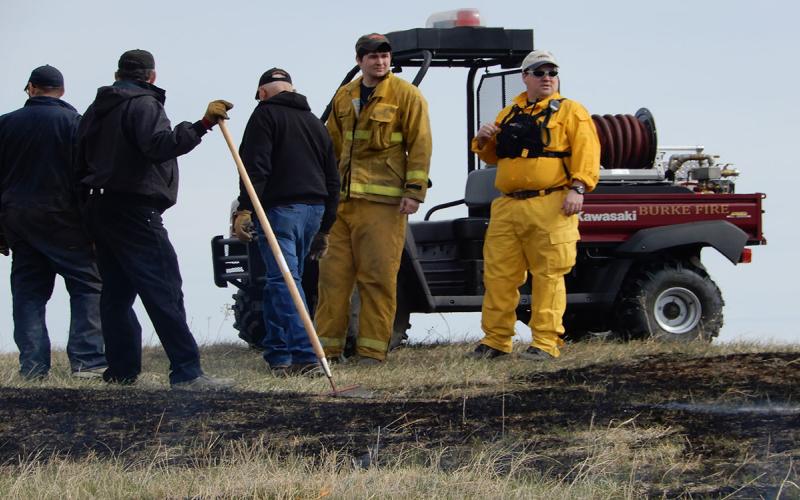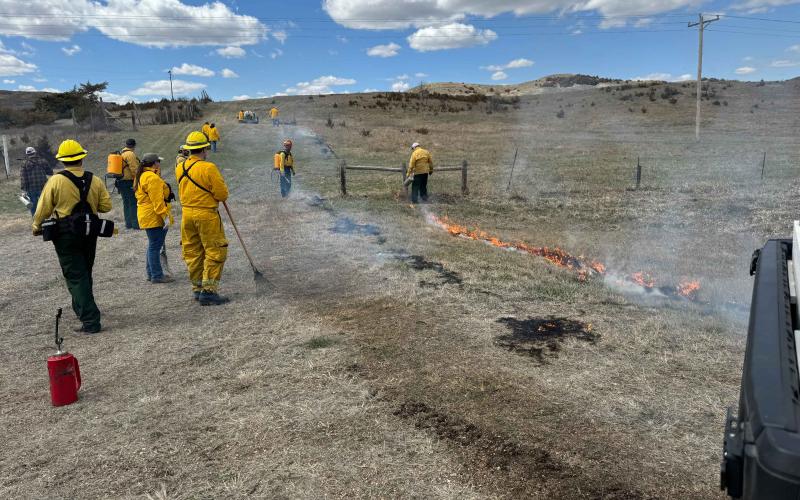Drive by a wetland in the dead of winter and it may look like a shut-down ecosystem, patiently waiting for spring to return. But that is simply not the case. While winter may present its own challenges, life goes on (albeit more slowly) and wetlands play an important role.
Plants
As long as a wetland does not freeze solid and sunlight is able to penetrate the ice, photosynthesis by phytoplankton (algae) and other submerged aquatic plant life continues to occur. Phytoplankton and aquatic plants (primary producers) form the base of aquatic food webs and the production of oxygen is vital to the consumers farther up the food chain. Even emergent plants that go dormant in the winter can play an important role in the annual life cycle of a wetland. Many perennial wetland plants have rhizomatous root systems which store carbohydrates over the winter while the leaves of the plant die back. Some of these root systems (i.e. the arrowhead plant) go on to develop tubers along the rhizomes where energy is stored for the next growing season. These tubers also serve as a food source for ducks, geese, swans, muskrats and beavers. The arrowhead plant is also known as the duck potato indicating its importance as a food source for waterfowl.
Amphibians
Amphibian populations in the Prairie Pothole Region have been impacted by wetland drainage and grassland conversion. During winter, amphibians are dependent on both habitats by sheltering in burrows or hibernating underwater. Because amphibians spend parts of their lives in water and on land, they are important middle players in both aquatic and terrestrial food chains, serving as both predator and prey. Amphibians, such as salamanders, frogs, and toads, are known as indicator species because of their permeable skin which makes them extremely sensitive to changes in their environment. They are generally the first animals to die off when their habitat is disturbed or contaminated.
Flood Control
One of the more important ecosystem services that wetlands provide, and maybe most overlooked, is flood control. Generally speaking, but not always, flooding in our area follows snowmelt runoff with streamflow peaks occurring in the spring. Functional wetlands within a landscape will collect runoff water and act as a storage sink, retaining water that would otherwise contribute to flooding conditions. Downstream flooding risk increases when wetlands are altered or drained. While wetlands may not prevent a flood from occurring, they can help reduce the severity of the event.
Overwinter Cover

It’s no secret that pheasant hunting is big business in South Dakota. For instance, South Dakota Game, Fish & Parks estimated that pheasant hunting generated a $281 million economic impact in SD in 2023. Overwinter cover is an extremely important component to pheasant survival. In a recent study, Kauth et al (2022) assessed winter mortalities in adult hen pheasants. Results showed that pheasants using landscapes other than perennial cover (i.e. emergent wetland, tall vegetation, food plots, and woody features) experienced a 2.22 times greater risk of raptor predation than pheasants using perennial cover. Additionally, pheasants experienced a 58% reduced risk of weather mortality when using emergent wetlands. Emergent wetlands (cattail sloughs) become increasingly important to pheasant survival during severe winters.
Additional Information
- Modeling effects of conservation grassland losses on amphibian habitat, Biological Conservation (Volume 174, June 2014, Pages 93-100)
- How Do Freshwater Turtles Survive a Canadian Winter?, Canadian Wildlife Federation
- Wetland loss impact on long term flood risks in a closed watershed, Environmental Science & Policy (Volume 94, April 2019, Pages 112-122)
- Wetlands, Flood Control and Ecosystem Services in the Smith Creek Drainage Basin: A Case Study in Saskatchewan, Canada, Ecological Economics (Volume 147, May 2018, Pages 36-47)
- Hunt Pheasant, South Dakota Game, Fish & Parks
- Snow and land use alter pheasant survival in South Dakota, Wildlife Management (Volume 86, Issue 6)


